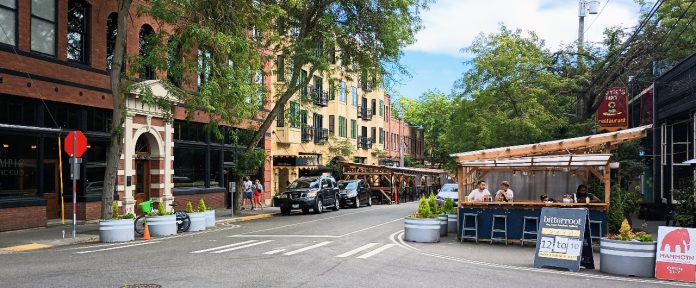
The Seattle City Council is set to consider a slew of transportation-related amendments to Mayor Bruce Harrell’s proposed budget for 2024, in an annual ritual where councilmembers try and push their policy priorities through appropriations and vie for the opportunity to fund improvements in their own districts.
Facing a budget that largely ignores the looming deficit facing the city if current spending levels continue into 2025, many members of the city council are using this year’s budget as an opportunity to push long-delayed projects forward — and they’re aided by a new City revenue forecast that has provided an additional amount of cash that hadn’t been banked on when the Mayor’s budget was put together.
Following a better-than-expected revenue forecast earlier this month, Budget Committee Chair Teresa Mosqueda was able to add back in additional transportation funding, filling in an approximately $10 million hole that had been created by shortfalls in places like the school zone speed camera program, and reversing proposed cuts to the city’s ADA curb ramp program, neighborhood greenways, and Vision Zero road safety education campaigns.
But many councilmembers are trying to utilize city funding next year to do even more for transportation in the lead up to the potential renewal of the Move Seattle transportation levy. Here are some of the biggest amendments moving forward in the next few weeks, with a final up-or-down vote on each one expected during the week of November 13.
$1 Million for Additional Transit Ambassadors
One amendment by Councilmember Dan Strauss would divert $1 million from Seattle’s dedicated sales tax for transit service to fund an expansion of King County Metro’s transit ambassador program. Currently operated by Metro as a pilot program, a small team of bus drivers who are on temporary duty assignment have been deployed at high transit use areas like Seattle’s Jackson Street corridor, Mount Baker light rail station, and Renton transit center.
The workers in blue jackets are there to answer questions and provide help for how to use the bus system, providing additional eyes on the street. But Strauss’s amendment seems aimed at getting more people directly on buses, and filling the role that might generally be filled by transit security.
“Simply put, everyone has been on a bus with a bottle rolling around the back or somebody playing music too loud… or something more critical that needs to be addressed,” Strauss said. “Ambassadors riding the bus would allow the operator to keep their eyes on the road, the bus moving forward, and to have behaviors that we don’t want to have on transit addressed by a person who can address them well.”
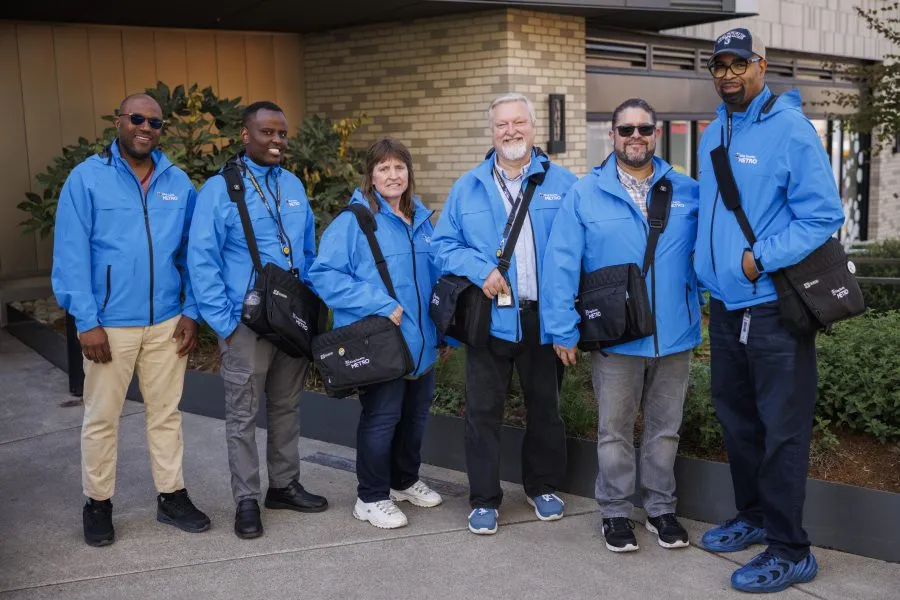
But the transit ambassador program is different from Metro security. The 2023-2024 budget for Metro included significant funding to expand security presence across the countywide bus system, with over $20 million included to expand its security force to 140 staff through the county’s contract with Securitas, a private sector firm. Since June, security staff have been deployed 24/7 to Metro’s busiest county-controlled transit centers, at Aurora Village and Burien, as well as high-use stops around 3rd Avenue in Seattle.
It’s also not clear that Metro is ready to scale up the transit ambassador program, a move that would likely be made in conjunction with the King County Council.
Setting Seattle up to provide additional staff throughout King County could end up being a long-term commitment that the city isn’t ready to continue past next year. The dedicated sales tax for transit, seeing a slight uptick in projected revenue next year, also funds transit passes for Seattle residents who need transit access, and physical improvements that are intended to serve transit riders.
Strauss is joined in support for this amendment by Councilmembers Lewis and Herbold.
$1 Million for Accessible Mount Baker
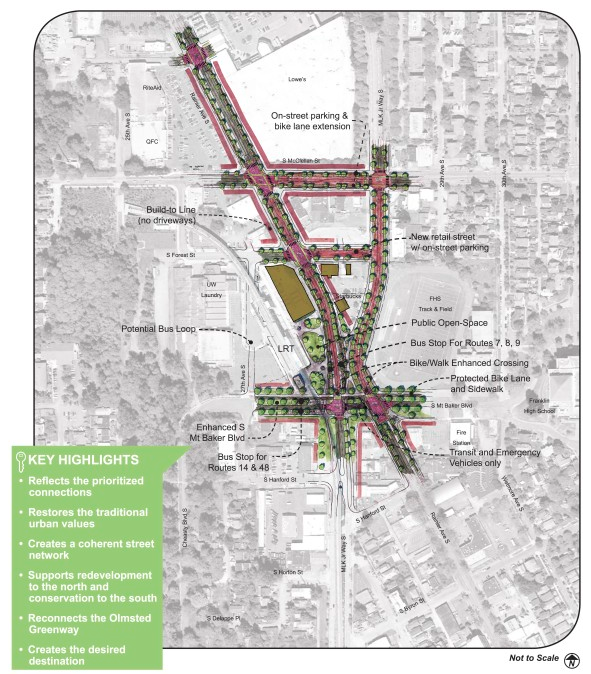
Councilmember Alex Pedersen, in partnership with Councilmember Tammy Morales, also propose to utilize funding from the transit sales tax, but in order to avoid that potential issue of ongoing costs, to be spent only on one-time capital projects. The biggest recipient of their proposed $1.4 million diversion from the Seattle transit measure would be a $1 million allocation for the Accessible Mount Baker project.
Accessible Mount Baker, a centerpiece of the 2015 levy, went from being a transformative vision for one of South Seattle’s busiest transit hubs to becoming a low priority for the city, with a few modest improvements to the area around MLK Jr Way S and Rainier Avenue S, one of the city’s most dangerous intersections, lumped in with a related corridor upgrade on MLK Jr Way S north of the intersection.
This proposal would restart that work, and Morales specifically called out the idea of converting one side of divided S Mount Baker Boulevard into walking and biking space, an idea that was considered in 2019, but discarded by SDOT the following year, with cost cited as the most significant barrier to doing it right.
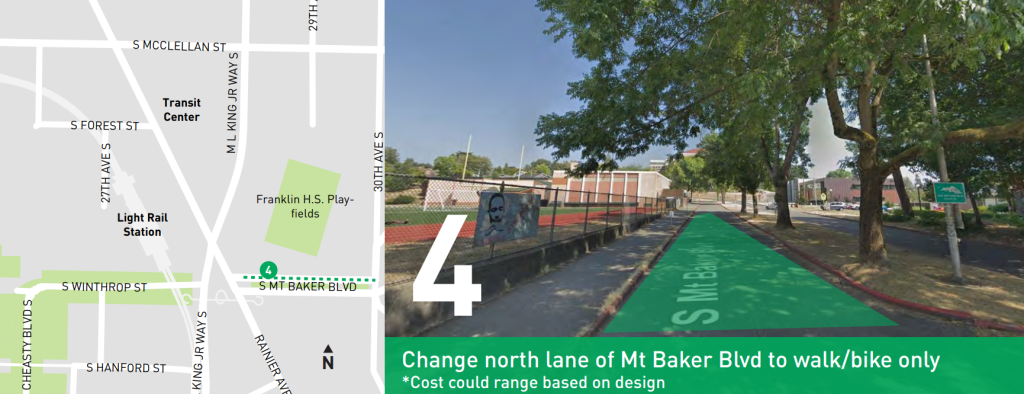
“If you’ve ever been through there after school, the students at Franklin High School don’t have bus service: they walk, a lot, around there, and it’s a very busy intersection,” Morales said.
The ultimate vision for Accessible Mount Baker had been creating safe space for people to bike on all of the arterial streets in the area, which are currently incredibly hostile with very high vehicle speeds. One million dollars could go a long way, but only if the Harrell administration, unlike the Durkan administration before them, sees Accessible Mount Baker as a priority.
On top of that $1 million, $400,000 from this amendment would be allocated to transit-related capital projects, like those that could increase reliability of Route 8.
$500,000 to Turn Ballard’s Cafe Street into a “Template”
Another budget request from Councilmember Dan Strauss is a $500,000 earmark around Ballard Avenue NW’s popular cafe street. Following the investment of significant city resources into creating permanent street dining structures along the corridor and adding traffic calming, Strauss wants to provide additional funding to try to jumpstart other cafe streets elsewhere in town by creating a final product on Ballard Avenue.
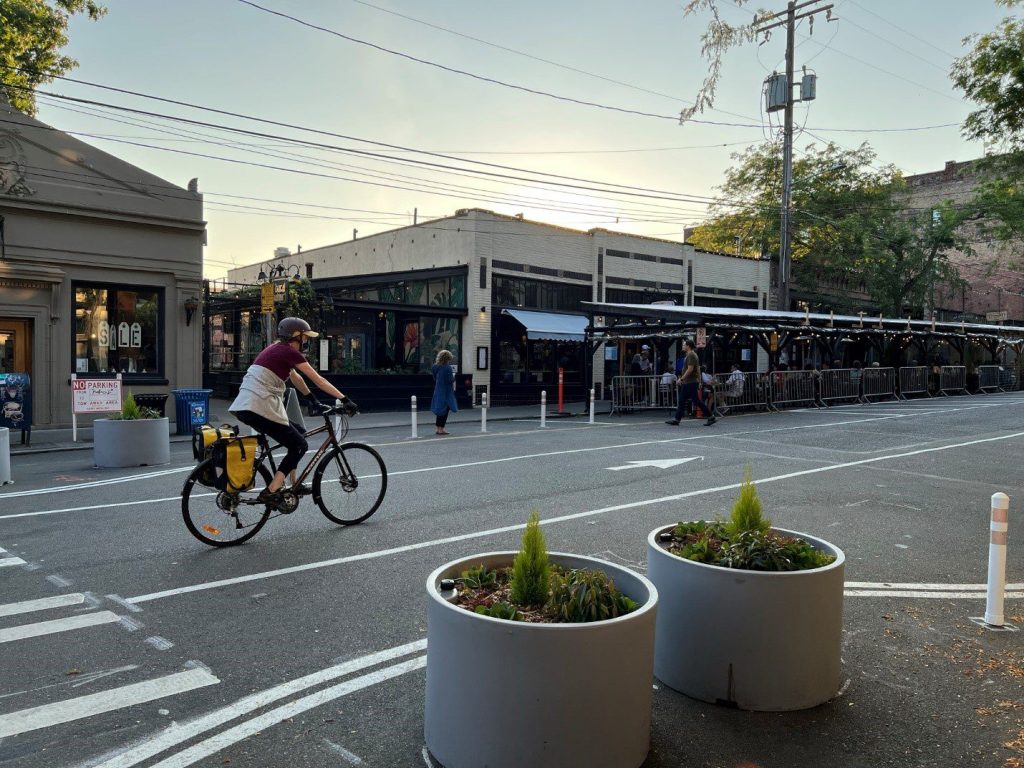
“This is a funding request to make the final changes and incorporate this work into Streets Illustrated,” Strauss said, referring to SDOT’s official manual for street designs across the city, “so that it can be easily applied to neighborhoods across Seattle, whether it’s in Columbia City, whether it’s in West Seattle, whether it’s downtown, Lake City, or the University District. Cafe streets are a unique way to use our right-of-ways for business and people, and Streets Illustrated is the format in which we that we do that.”
But Strauss’s amendment would tap funding from the city’s School Safety Traffic and Pedestrian Improvement fund, diverting away some of the funding intended to provide upgrades near schools that had just been restored in Budget Chair Mosqueda’s proposed budget. Strauss called himself “agnostic” regarding the funding source, but stated he’d been trying to get SDOT to fund this work for several years.
If the funding wasn’t all utilized by design work, Strauss’s amendment would direct any leftover balance to be used to improve pedestrian safety between Ballard Avenue on the west side of dangerous 15th Avenue NW and the “Brewery District” on the east side, another longstanding priority for Strauss, and the beneficiary of a separate amendment in this year’s budget.
Strauss is joined in support of this amendment by Councilmembers Lewis and Juarez.
No Cultural Connector Streetcar Funding
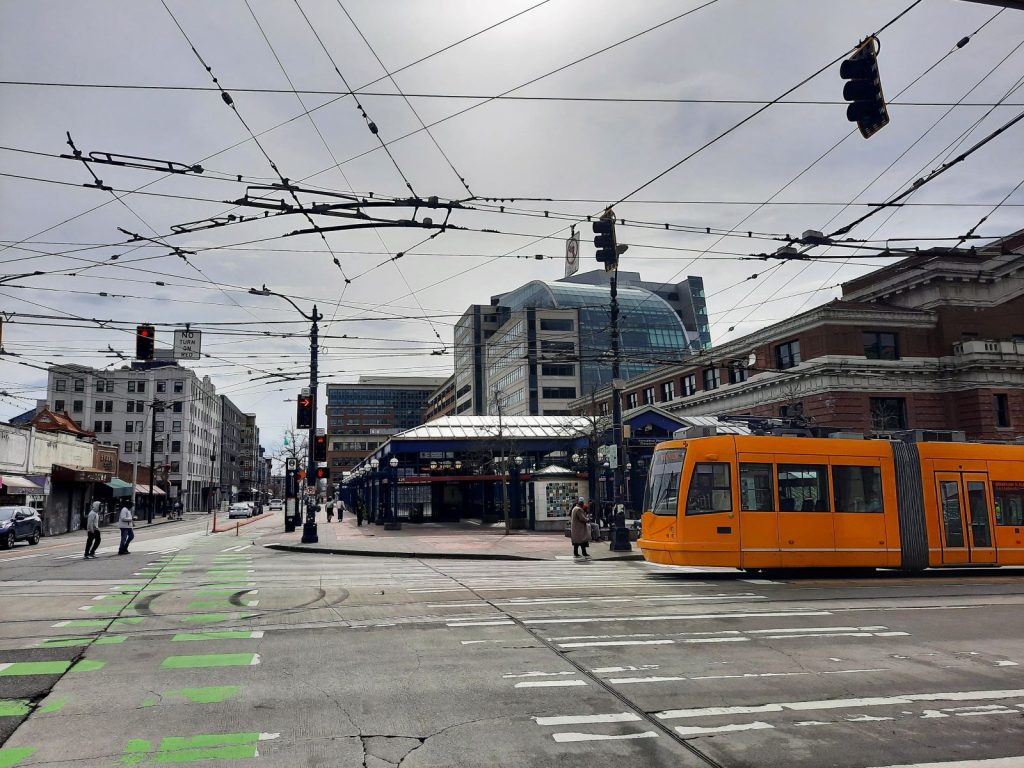
With the deadline for new amendments passed, it’s now clear that no amendment on the table includes any additional funding for Downtown’s First Avenue Streetcar, now called the Cultural Connector project. Last week, The Urbanist reported that without a local match for the streetcar project in this next year’s budget, $7.3 million in federal grants, administered by the Puget Sound Regional Council, are set to be returned.
SDOT is weeks away from releasing the results of a “delivery assessment” that will provide updated costs for the streetcar project, as well as associated ridership estimates and implementation considerations. But it’s clear that moving the project forward has become a low priority for the mayor and not a priority at all for the current city council.
A Land Sale in South Lake Union?
Councilmember Andrew Lewis is trying to utilize the 2024 budget to prompt the city to sell a piece of property in his district, in order to utilize the funding for a long-delayed pedestrian and bicycle improvement project that would be built nearby. The property, at 900 Roy Street, is a small wedge-shaped lot that’s currently home to a parking lot and small warehouse and had been acquired a decade ago as part of the Mercer Street corridor rebuild. Other properties acquired during that project have been divested, but this one remains.
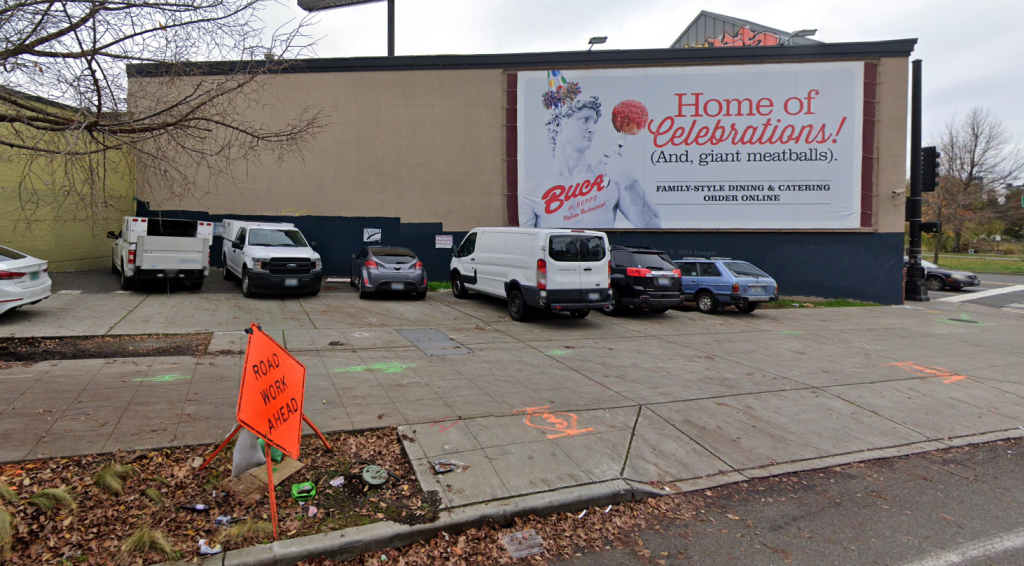
Because the property was purchased using state gas tax funding, the city believes it needs to use the proceeds of any land sale for “transportation purchases,” per state law. So Lewis is trying to earmark the funds to provide the additional dollars needed to complete the Thomas Street Redefined project, creating a safer way to bike and walk between Seattle Center and the rest of the neighborhood. That project was scaled back in last year’s budget, with some elements moving forward toward construction in early 2024 but with many left behind.
None of these amendments are certain to move forward, but all are set to be debated as the council moves toward final adoption of the budget just before Thanksgiving.
Ryan Packer has been writing for The Urbanist since 2015, and currently reports full-time as Contributing Editor. Their beats are transportation, land use, public space, traffic safety, and obscure community meetings. Packer has also reported for other regional outlets including Capitol Hill Seattle, BikePortland, Seattle Met, and PubliCola. They live in the Capitol Hill neighborhood of Seattle.


